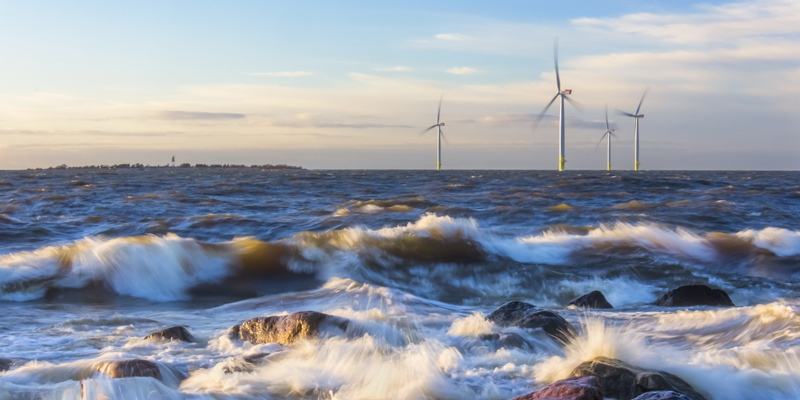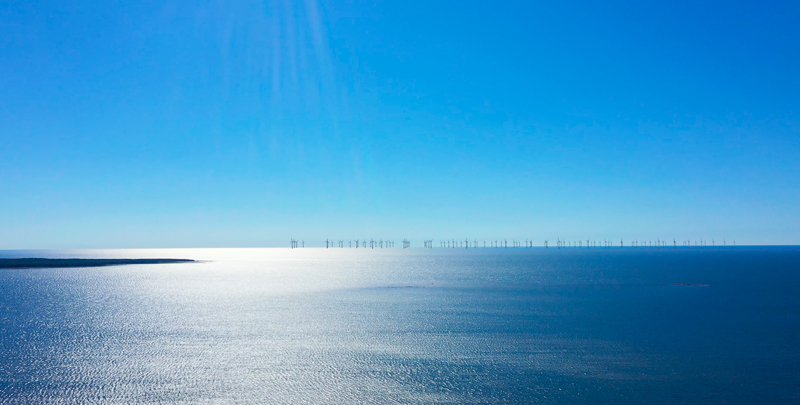Backround of the Korsnäs offshore wind farm project
The municipality of Korsnäs approved Metsähallitus’ planning initiative on the offshore wind farm in autumn 2020. The project site is located on a public water area managed by Metsähallitus, approximately 15 kilometres off the west coast in the area of Korsnäs municipality. Examples on other distances to the project area: 13 km to Blacksögrundet in the municipality of Närpiö, 16,3 km to Storkorshamn in Korsnäs and 24,8 km to Bergö fishing harbour located in the municipality of Maalahti.

During the first phase of the project, up to 150 turbines with a nominal power of 12 to 22 megawatts or more would be built in the area. The Korsnäs project will thus become the first offshore wind farm located in the open sea area in Finland.
The annual production of the offshore wind farm was initially estimated to be around 5,000 GWh. This would, for example, be sufficient to cover the electricity needs for a full year for approximately 250,000 individual households with electric heating. The figure has later been refined.
Project area was relocated due to natural values
The project site of 220 km2 is located on an area designated for wind power production in the Maritime Spatial Plan and an area reserved for wind power production in the regional land use plan for Ostrobothnia.
The Maritime Spatial Plan is a strategic positioning document jointly formulated by key stakeholders in the marine area regarding the area’s sustainable use and the measures needed to maintain an adequate environmental status.
The location of the offshore wind farm was moved further south at the beginning of the project after the surveys. Project site is now located further away from the Kvarken World Heritage Site, nature reserves and from fish spawning grounds.
The final boundary of the area will be specified as planning progresses. The precise location will be affected by considerations such as protected areas, the seabed, water depth and inclusive discussions with different stakeholders. Shipping routes in the area and the needs of the Finnish Defence Forces have also been taken into account in the location of the planning area.
Careful surveys of an area with ideal wind conditions
The wind conditions in the sea area off the Korsnäs shore are ideal. The average wind speed on the site may exceed 9 meters per second. The water depth and seabed geology are also well suited for wind power construction.

The water depth at the project site is mainly 10 to 30 meters. The richest biodiversity of seabed organisms is found at depths of less than 10 meters. However, the benthic fauna in the area will be surveyed in detail as the project progresses.
Fishing and fish species have also been taken into account in the spatial planning of the project. Reefs and shallow areas important for fish reproduction are excluded from the project site. We have also examined the flyways of migratory birds and determined that the project site is far enough not to interfere with the flyways.
The wind farm site is located more than ten kilometres away from Kvarken Archipelago, the only natural heritage site in Finland on the UNESCO World Heritage List. Natura habitats are also located within sight of the project site. The impacts of the wind farm on these areas will be examined as part of the project’s permit process.
Discussions on the submarine cable
To transmit electricity from the project site in Korsnäs to the mainland, submarine cables will be laid on the seabed. A power line built on the mainland will connect the offshore wind farm to the existing electricity grid.
The national system operator responsible for Finland’s electricity transmission network is Fingrid. Alternative transmission cable connections will be examined as part of the environmental impact assessment (EIA).
The conditions in the Finnish sea areas are different from those in seas such as the North Sea as cold and ice require different technical solutions.
We believe that the development of offshore wind power will bring a new kind of know-how to Finland, and on the other hand create new opportunities for the development of existing core know-how.